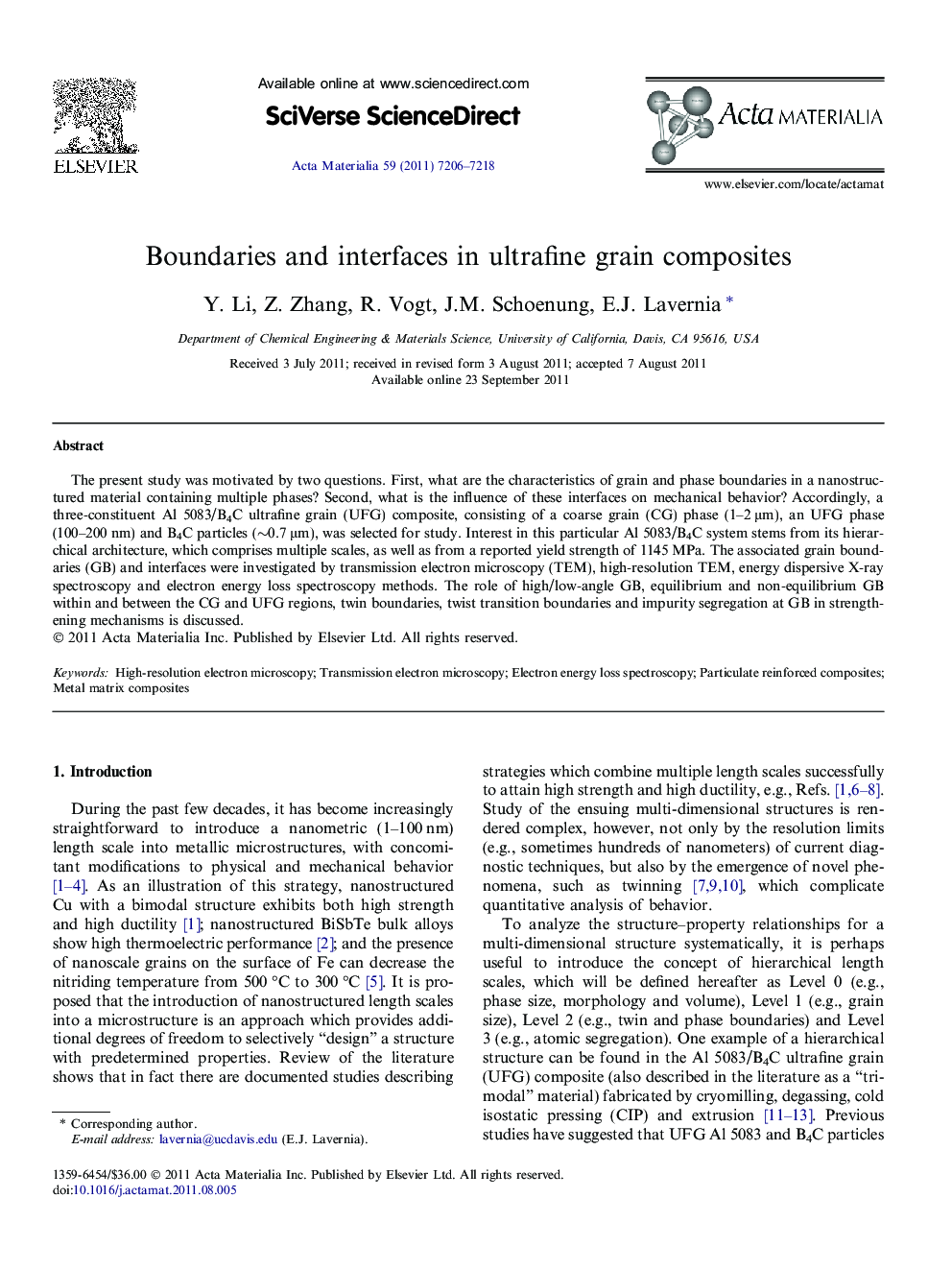| Article ID | Journal | Published Year | Pages | File Type |
|---|---|---|---|---|
| 10620416 | Acta Materialia | 2011 | 13 Pages |
Abstract
The present study was motivated by two questions. First, what are the characteristics of grain and phase boundaries in a nanostructured material containing multiple phases? Second, what is the influence of these interfaces on mechanical behavior? Accordingly, a three-constituent Al 5083/B4C ultrafine grain (UFG) composite, consisting of a coarse grain (CG) phase (1-2 μm), an UFG phase (100-200 nm) and B4C particles (â¼0.7 μm), was selected for study. Interest in this particular Al 5083/B4C system stems from its hierarchical architecture, which comprises multiple scales, as well as from a reported yield strength of 1145 MPa. The associated grain boundaries (GB) and interfaces were investigated by transmission electron microscopy (TEM), high-resolution TEM, energy dispersive X-ray spectroscopy and electron energy loss spectroscopy methods. The role of high/low-angle GB, equilibrium and non-equilibrium GB within and between the CG and UFG regions, twin boundaries, twist transition boundaries and impurity segregation at GB in strengthening mechanisms is discussed.
Keywords
Related Topics
Physical Sciences and Engineering
Materials Science
Ceramics and Composites
Authors
Y. Li, Z. Zhang, R. Vogt, J.M. Schoenung, E.J. Lavernia,
